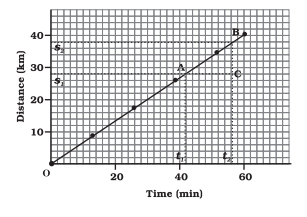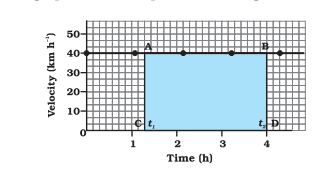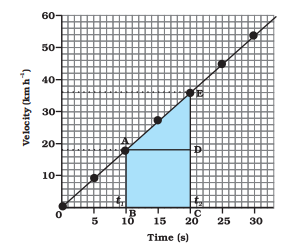Motion
We are all familiar with the notion of motion. Put simply, any object that is moving in some way, is undergoing motion. However, from the scientific point of view, we need to be more precise in our approach when dealing with any topic, so we start by defining some terminology and differentiating between it.
Distance and Displacement
Distance is defined as “the total path length covered by an object during its motion”.
Displacement is defined as “the length of the shortest path connecting the beginning and end of the motion”. Note that distance travelled is always greater than or equal to the displacement.
Question: When is the displacement of an object equal to its distance
travelled?
When an object undergoes motion in a straight line, distance travelled = displacement.
Speed and Velocity
Any kind of motion takes some time to happen. If we are interested in the rate at which this motion is happening, we need to define two types of quantities:
If we consider the rate of displacement of a body, that is, the displacement undergone by a
body in a given amount of time in a particular direction, we get its
velocity.
In other words, velocity = total displacement in a direction/time taken
Similarly, the speed of a body is defined as the distance travelled by a body in a given time, or:
Speed = total distance travelled/time taken
Question: When is the velocity of a body same as its speed?
When its displacement is equal to the distance travelled, ie, when it undergoes motion in a straight line.
Question: A body completes a full revolution along a circle and ends up
on its starting point. What is its displacement and velocity?
Since the beginning and the end point are the same, the net displacement is zero, and therefore, the velocity is also zero.
When the velocity of a body does not change, that is, it moves at a constant speed AND in a fixed direction, it is said to undergo uniform motion. If its speed is not constant, or its direction of motion changes, that is non-uniform motion. For example, circular motion is non-uniform motion because the direction of motion is constantly changing.
Objects that undergo non-uniform motion are said to be accelerated or accelerating. Acceleration is the rate of change of velocity.
Let’s briefly look at the SI units of the quantities we have covered so far.
|
Quantity |
Unit |
|
Distance |
meters |
|
Displacement |
meters |
|
Speed |
meters/second |
|
Velocity |
meters/second |
|
Acceleration |
meters/second2 |
Graphical Representation of motion
Usually, if we want to plot a distance time graph, we choose the x axis to represent time, and y axis to represent distance. For example, consider the following distance time graph:

Question: What can you infer from the above graph?
Note that all the points lie on a
straight line, that is, the “slope” of the graph is constant. This implies that
the body covers the same distance in equal amounts of time. Which means its speed is constant.
Note: The speed of the object can be found using v = (s2 – s1)/(t2 – t1).
We can also plot a velocity time graph. Again, time is on the x axis. Look at the following graph as an example:

Question: What can you infer from the above velocity time graph?
· Note that the velocity remains constant throughout the motion. Which means, this is an example of uniform motion. The velocity I constant at 40 kmph.
· Also, since velocity = displacement/time, displacement = velocity x time. So, we can use the above graph to find the total displacement, which is found by calculating the area of the graph. Therefore, total displacement = 40 kmph x 2.8 hours = 112 kilometers.
Following is the velocity time graph of an object moving with non uniform speed:

Question: Find the displacement of the
object after motion ceases.
The displacement is given by area under the curve, which is 10 x (18 + 36)/2 = 270 kilometers.
The three equations
of motion
The motion of an object moving at uniform acceleration can be described with the help of three equations, namely:
·
v = u + at
·
s = ut +
½ at2
·
2as = v2 – u2
The key term here is uniform. If the acceleration is not constant (that is, uniform), we cannot apply these equations “As it is”, rather, we need to chop down the motion into intervals of time for which the acceleration is uniform, and apply the equations to those intervals.
Summary
· Distance is defined as “the total path length covered by an object during its motion”.
·
Displacement is defined as “the length of the
shortest path connecting the beginning and end of the motion”.
·
The speed of an object is the distance covered
per unit time, and velocity is the displacement per unit time.
·
The acceleration of an object is the change in
velocity per unit time.
· We can use graphical approach to figure out information about the object’s motion.
· We use three equations of motion to describe the movement of an object undergoing constant acceleration.
 Discuss
Discuss